We taste-tested proseccos for all kinds of palettes and occasions so you don’t have to
Content is created by CNN Underscored’s team of editors who work independently from the CNN newsroom. When you buy through links on our site, CNN and its syndication partners may earn a commission. Learn more
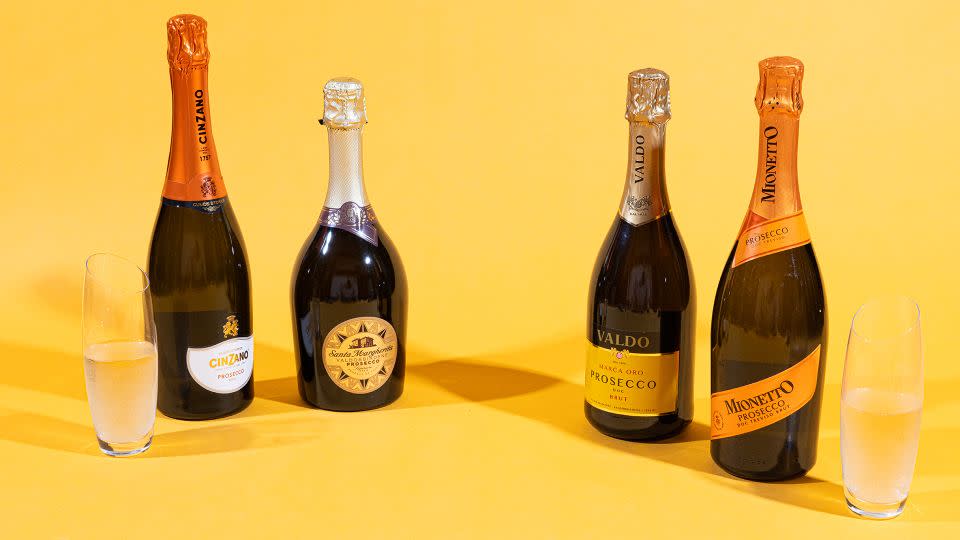
Now that it’s finally spring, it’s time for all the celebrations to begin — graduations, weddings, the end of seasonal depression and beyond. Naturally, you’ll want to pop a bottle of something bubbly but, given the endless choices, it may be hard to decide on the right one. If you’ve spent any time perusing your local wine shop or favorite online wine purveyor, a crisp bottle of prosecco might be on your radar — which tends to be a fan-favorite choice due to its lower price point.
We feel you. After researching and choosing from an array of top-rated proseccos at various prices and a range of flavor notes, the team at CNN Underscored decided to taste them head-to-head to find our favorites. Everyone in the taste test had their personal preferences when it came to flavor, carbonation and sweetness levels, ensuring we accounted for all kinds of sparkling wine enthusiasts and newbies.
But before we get into the nitty-gritty, like what we liked and didn’t like, here are the basics you’ll need to know before you pop the cork.
What is prosecco?
Prosecco is a sparkling wine mostly made in a specific region of Italy. Sarah Favigner, wine buyer and general manager at Brooklyn’s Smith & Vine has become an expert on all things sparkling wine.
“Prosecco is a style of sparkling wine made in the northeast of Italy, most predominantly in Veneto, and is typically made from 100% Glera grapes,” she told CNN Underscored. “Newly allowed rosé prosecco has a small amount of red grapes as well to get the pink color.”
The grape’s moderately high acidity gives a perfume of melons, peaches, pears and white flowers. The resulting wines are typically light to medium-bodied.
How is prosecco different from champagne or rosé?
Upon first glance, and unless you’re educated in all things bubbly, it can be nearly impossible to tell the difference between these bottles. “As many people have heard, Champagne can only be from the Champagne region of France, and prosecco can only be from Italy and made with Glera grapes,” said Favigner.
So yes, only wines originating from this region in France can legally be called Champagne and anything not from these two places is just plain old sparkling wine (we’re looking at you, USA).
Another major factor is how they produce the effervescence. “Champagne becomes sparkling through secondary fermentation in each individual bottle, while prosecco goes through secondary fermentation in large tanks which makes it easier and less expensive to produce,” explained Favigner. “Sparkling rosé wines in many regions are typically made by blending mostly white grapes with just a touch of red grapes.”
Prosecco also carbonates in stainless steel vats — a process that is less timely and money-intensive, which explains its general affordability. This process is called the “Charmat Method ” and means the wine has far less contact with the lees (deposits of dead yeast cells), which allows the fruit character to shine through better.
What popular cocktails use prosecco?
Although Prosecco can be enjoyed on its own, it can also be found in all types of cocktails — both classic and experimental. And of course, you may feel better about mixing a less pricey sparkler with your orange juice at that next boozy brunch.
Andrew Avery, the sommelier at The Standard, High Line, noted that the most popular prosecco cocktail at the Standard’s restaurant, called The Grill, is the Aperol Spritz. “It combines a wonderful wine and liqueur from Venita, in northern Italy,” he said. “There’s a reason the whole city is drinking them.”
And with warmer weather coming our way, you can expect to see even more of these orange-hued drinks being sipped.
Cedric Nicaise, Sommelier and Co-owner at The Noortwyck agrees. “The Aperol Spritz is the king of sparkling wine cocktails.” However, Steven Karataglidis, sommelier at the Fairmont Royal York, has a classic take. “For us, mimosas [sparkling wine and orange juice] are still number one by far.”
Liz Martinez, general manager and sommelier at The Apparatus Room sees the Hugo Spritz, a cocktail hailing from Northern Italy made of prosecco, elderflower liqueur (typically St.Germain), and a healthy dose of mint sprigs, as the next big prosecco-forward trend. “Prosecco is a great combination of bubbles, acid and fruit, which plays along nicely with any of the fruity, floral-flavored liqueurs that make up the body of the drink,” she said.
What brands of prosecco are people ordering at the bar?
“There is still not a whole lot of name recognition for prosecco,” said Martinez. “Most people are ordering it based on the style of wine.” Moore agreed, adding, “We see dry Prosecco as the most popular style among guests. This is a general theme we see through and through — our guests tend to be sugar adverse.”
What to consider when picking prosecco
Most palettes will be sated with fresh fruit and citrus flavors, light bubbles, a balance between sugar and acidity and the authenticity of the grape. But in the end, quality is always king.
“[Check] everything you would look for in a high-quality wine producer: method, terroir, philosophy, complexity, quality, amongst others,” said Chris Moore, head of bars at The Ned NoMad. “Prosecco is evolving, which means a whole generation of producers and guests have come through who want something of a high quality.”
Price also plays a major role in the hunt for the right prosecco, no matter the occasion. “Simple and cheap is what you want,” said Nicaise. Martinez agreed: “Prosecco has the ability and the price range to be either serious or fun and unlike many wines out there, price is one thing that can dictate this. There are more serious styles, most of which are still in an affordable price range. You can find a very nice bottle of DOCG prosecco from Valdobbiadene for around $20 — and this region takes their prosecco very seriously.”
Here are other considerations, according to our experts:
Authenticity: A good Prosecco has to be Italian, which you can confirm with the DOCG label (Denomination of Controlled and Guaranteed Origin).
Fruit character: Prosecco typically has citrus notes or green fruit flavors like apple, pear or quince.
Style: The two most commonly found in proseccos sold here in the United States are brut, which uses less sugar, and extra dry, which, ironically, is the sweeter of the two.
Acidity: Look for enough acidity to balance the sugar.
How should you drink and store your prosecco?
Moore recommends drinking prosecco just as you would enjoy any sparkling wine. “While the regulations aren’t as strict, prosecco is moving into a space that it hasn’t necessarily been historically — where there are producers that can be considered similar to the level of champagne houses.”
This means you can enjoy prosecco chilled between 40 and 45 degrees for at least an hour or two before sipping. It can also be chilled in an ice bucket. Favigner suggests serving it quite cold for maximum enjoyment. “And make sure to keep it away from direct sunlight or heat sources,” she added.
Although your first instinct may be to pop your champagne bottle and pour with gusto, you may want to reconsider your pouring speed. “Prosecco should be opened, poured and served like any other sparkling — slowly and carefully,” said Avery. “Make sure it’s chilled and keep the bottle on ice.”
Experts agree prosecco is best enjoyed in a wide-shaped glass which helps hold all the aromas. However, Moore also encourages wine enthusiasts to experiment. “Find what you prefer and go with it,” he said. “I love any great sparkling wine in a glass that is somewhere between a flute and a wine glass.”
“I still think a classic flute is best but if you want to be extra fancy or seem like an expert, try a thin white wine glass,” added Karataglidis. Martinez, on the other hand, suggested a standard wine glass. “I drink any and all bubbly from a wine glass — I believe you should be able to taste the wine beyond the bubbles and acid and one way to achieve this is a glass with a wider mouth.”
How we tested
We chilled each bottle of Prosecco for three hours before our taste test.
We used a combination of flute and tulip-shaped glasses.
We ranked each prosecco on a scale of one to five for its fruit character, sweetness level, carbonation and acidity with five being the “best.”
What we liked
Mionetto Prosecco Brut
Best prosecco overall
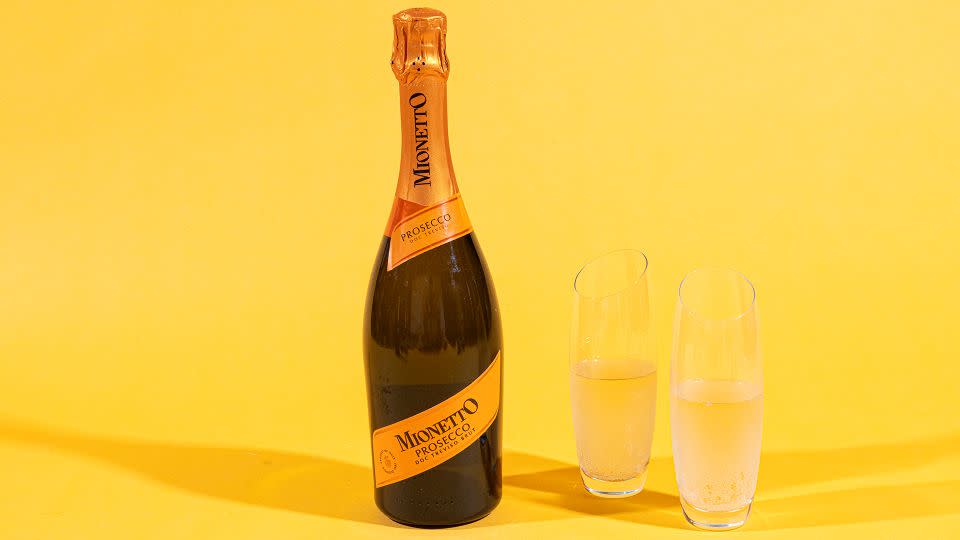
You’ve likely seen Mionetto’s iconic orange packaging (not to be confused with the classic label of Veuve Clicquot Champagne) at a bar over bellinis or when savoring an Aperol Spritz. According to Wine.com’s winemaker’s notes, this light-bodied prosecco features aromas of golden apples, honey and white peach — all of which our editors loved.
This sparkling wine can be enjoyed as an aperitif or throughout a meal, and the Mionetto website recommends “styling” wine with prosecco “juice cubes,” a combination of frozen peaches and herbs, or strawberries and mint.
Our team loved the classic, neutral flavors of this prosecco and thought it had just the right balance of fruitiness. Editorial coordinator Joe Bloss noted it was “subtle — but in a good way.” Associate editor Jillian Tracy agreed, describing it as “middle-of-the-road and balanced.” Overall, Mionetto had just the right amount of citrus notes without overwhelming our senses with bubbles.
Santa Margherita Brut Prosecco
Best fruit-forward prosecco
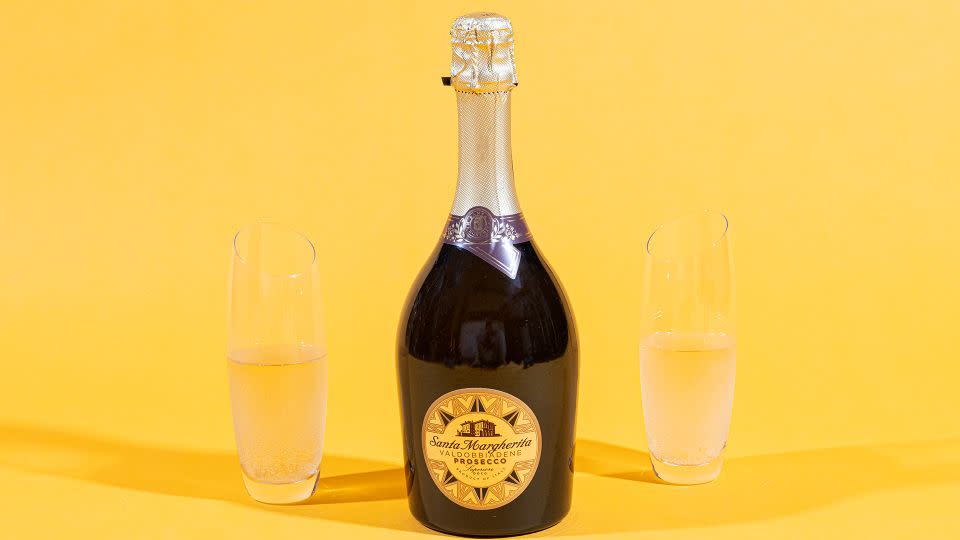
Before embarking on this taste test, our team made a note to pay special attention to the fruit notes in all proseccos — and the Santa Margherita bottle stood out from the bunch. According to Wine.com’s winemaker notes, this prosecco is dry with fine, lively bubbles and apple aromas. Our group appreciated the refined carbonation in this prosecco, with many agreeing this elevated the elegance.
Santa Margherita’s website also boasts tasting notes of ripe pineapples, peaches and Rennet apples in addition to delicate flowers, giving it a bright and dry sweet finish. This makes it an ideal pairing with seafood or rich, creamy dishes like pasta or chocolate-stuffed desserts.
Our editors also noted the unique apple smell of the prosecco that left a lasting impression. Senior testing editor Rick Stella noted: “[It has] a fruit-forward smell but not a fruity taste.” Fitness editor Tobey Grumet Segal agreed, adding: “It’s dry — and my favorite because it’s fruity.”
Cinzano Prosecco
Best prosecco for brunch
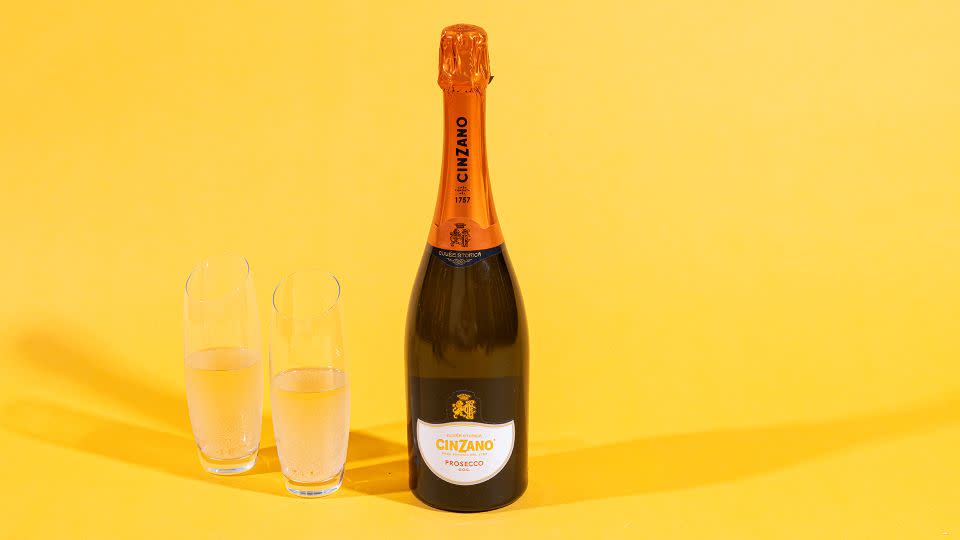
Of course, brunch isn’t complete without an Insta-worthy food-filled table or a fun, bubbly mixed cocktail.“I believe guests order Prosecco because they enjoy bubbles but they don’t necessarily need something too serious,” said sommelier, Liz Martinez. “You can usually rely on Prosecco being a nicely balanced sparkler that has good acid and fruit.”
According to Wine.com’s winemaker notes, Cinzano Prosecco is fresh, fizzy and fruity, with mostly apple and pear-ish flavors. It’s easy to see why this lively sparkling wine was our editors' pick for the best prosecco for brunch — even if many found it a little cloying. Strategy and operations manager of CNN Commerce, DaVonne Bacchus, summed it up best, “It is sweet and really gives brunch vibes.”
Valdo Brut Prosecco
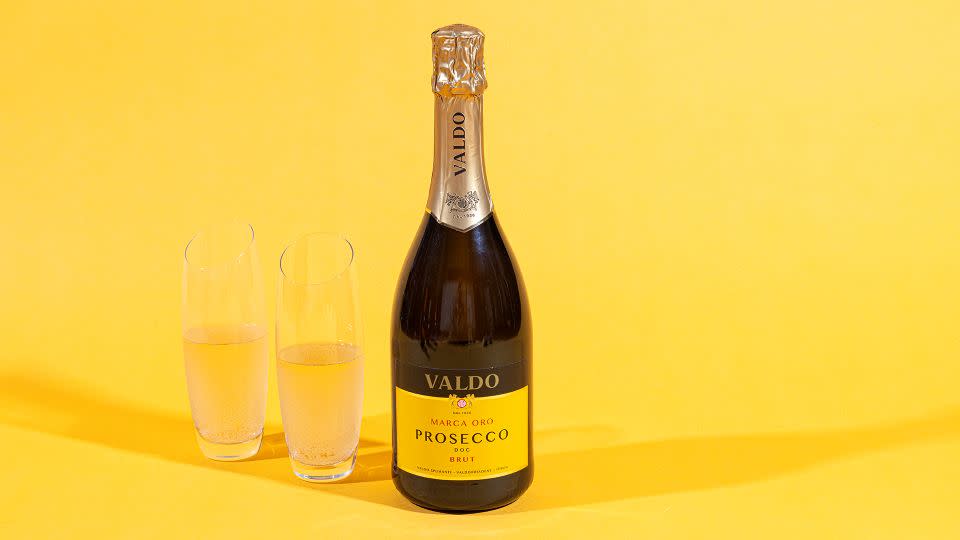
Our team was not expecting the bold flavors from Valdo Brut prosecco, which many described as “interesting,” “fresh” and “surprising.” According to Wine.com’s winemaker notes and professional rating, this prosecco features scents of white blossoms and a dry palate of lemon, melon and tart Rome apple.
Also described as “easy to drink,” this wine is enjoyed best with starters, seafood or delicately flavored dishes. Our team found all these elements unique, with associate editor Jillian Tracy calling it “funky and fermented.”
Other proseccos we tested
Villa Sandi il Fresco Prosecco
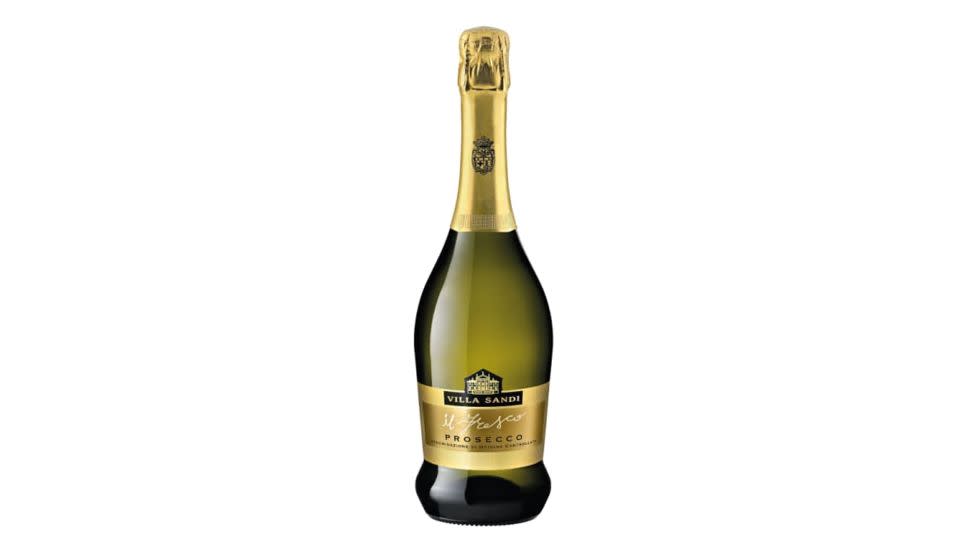
According to Wine.com’s winemaker notes, this bubbly features aromas of ripe golden apples, acacia and honeysuckle, making it dry, fresh and fruit-driven with citrus and stone fruit flavors. Though the flavor was unremarkable to our team, most testers enjoyed the fine bubbles in this prosecco. Managing editor Rachel Quigley wrote: “I didn’t like it but it had just the right amount of carbonation.” Senior lifestyle editor Tamara Kraus also noted: “This could be good for a mimosa.”
Adami Garbel Brut Prosecco
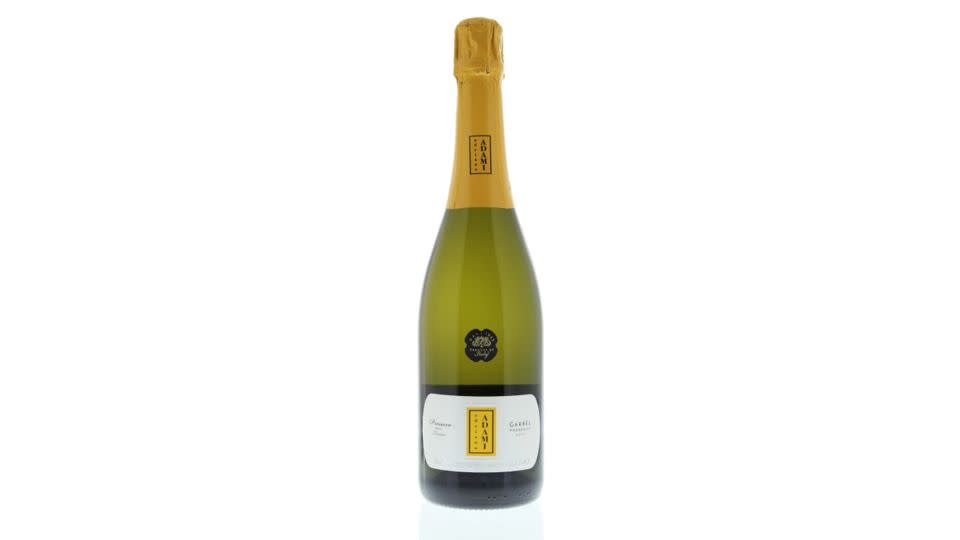
In stark contrast, our testing team found this prosecco harder to drink due to the high carbonation levels, and some even found it to be on the sour side. Home and Gifts editor Amina Lake Abdelrahman noted: “It’s too carbonated and too tart.” Social coordinator Gabby Triolo agreed, adding: “It feels heavy.”
Wine.com’s winemaker notes described this prosecco as being rich on the nose, with scents of yellow apple, peach, wisteria and acacia blossoms. It also holds a vein of acidity for a crisp and savory mouthfeel and lingering flavors. If you’re a fan of a powerful prosecco, this may be the pick for you — but our team found it too overpowering.
Nino Franco Prosecco Rustico
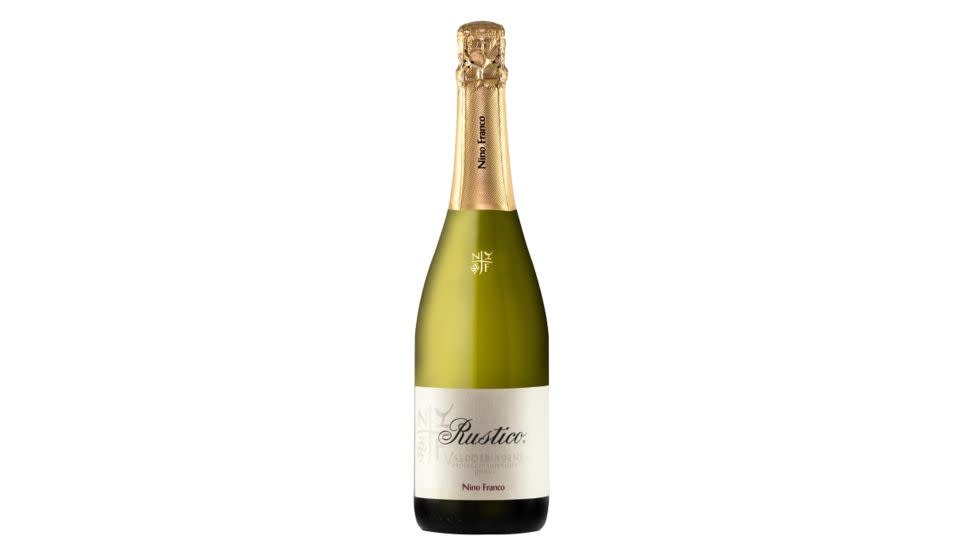
Yet again, our team found this prosecco way too bold for our palettes. Deals editor Chelsea Stone described it as “a lot” which many of our testers resonated with. This tart, acidic bubbly didn’t blow us away, although photographer Molly Flores loved the aromatic smell it gave off.
According to Wine.com’s winemaker notes, this prosecco features elegant notes of pear, citrus and honeysuckle with a creamy texture and persistent effervescence. It’s best paired with charcuterie, risotto, vegetables and delicate pasta dishes. This prosecco is named after the rustico winemaking method, meaning winemakers employ a shorter second fermentation in the bottle which leaves sediments in the wine. Although this wasn’t the case for this bottle, we found this overly fragrant wine quite strong for our tastes.
Ruffino Lumina Prosecco
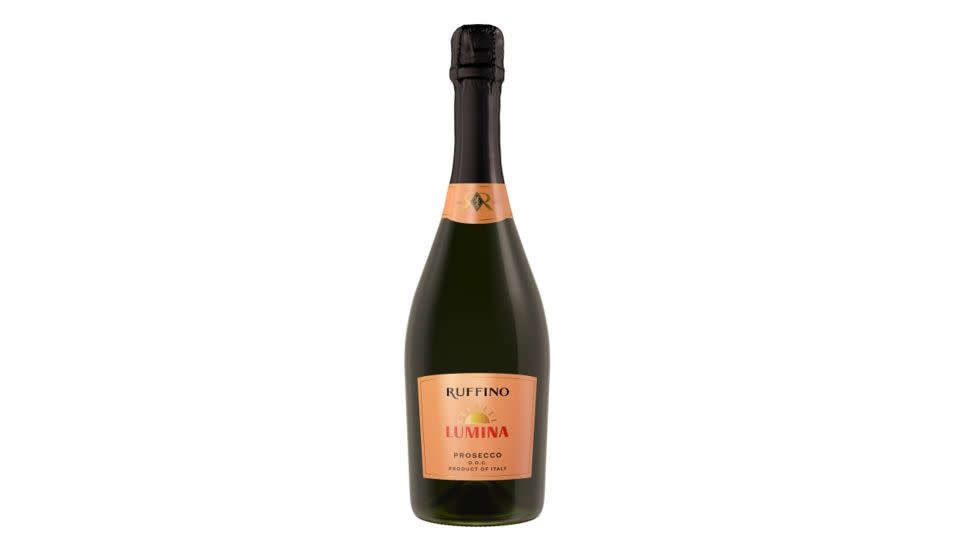
This brand was hit-or-miss amongst our testing team. While some, like Grumet Segal, adored its dry, easy-to-drink, gentle and smooth texture, others described it as an average, middle-of-the-road prosecco.
Wine.com’s winemaker notes described this wine as fragrant and intensely fruity with clean notes of apples, pears and citrus with hints of wisteria and elder. It also detailed the “pleasant aftertaste” reminiscent of fruity and floral aromas, which would pair well with everything from pizza to white-meat dishes. However, we all agreed this was a delight to sip when you just need a bottle of something bubbly to pass around. After all, as our photographer Molly Flores put it best: “The joy of prosecco is that it’s meant to be shared.”
Note: The prices above reflect the retailers' listed price at the time of publication.
For more CNN news and newsletters create an account at CNN.com

